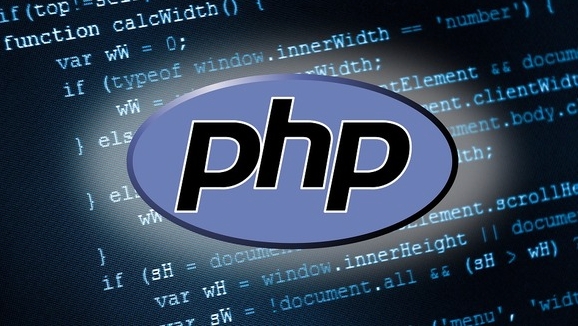Verify the validity of URLs. Regular expressions or built-in functions are commonly used in PHP. 1. Use regularity to flexibly match standard URLs, such as ^(?:https?://)?(?:[\da-z.-] ).(?:[az.-]{2,6})(?:[/\w.-])/?$ can identify addresses with protocols, domain names and paths; 2. If stricter verification is required, protocol headers and specification path characters can be mandatory; 3. It is recommended to use filter_var($url, FILTER_VALIDATE_URL) first, because it has good compatibility and supports complex situations such as IPv6, ports, and parameters, and the syntax is concise and reliable.

Verifying the effectiveness of URLs is a common requirement in PHP development, such as in form submission, data cleaning, or crawling projects. Verifying URLs with regular expressions (regex) is a direct and effective way, but it is not easy to write them accurately.

The most commonly used method in PHP is to combine filter_var() function and the FILTER_VALIDATE_URL filter. However, if you have more specific format requirements or want to understand the underlying implementation logic, it is also feasible to write a regex yourself.

Basic URL regular expressions
A common and standard rule that matches most standard URLs is as follows:
_^(https?:\/\/)?([\da-z\.-] )\.([az\.]{2,6})([\/\w \.-]*)*\/?$_Let’s explain the structure of this regularity:

-
^and$: indicates a complete match to avoid the situation where irrelevant characters are mixed in the middle. -
(https?:\/\/)?: Allow http or https, and the entire protocol part is optional. -
([\da-z\.-] ): Domain name body, containing letters, numbers, points and horizontal lines. -
\.([az\.]{2,6}): Top-level domain names, such as .com, .net, .co.uk, etc., with a length limit of 2~6 characters. -
([\/\w \.-]*)*\/?: The path part, supports multi-level directories, file names, spaces (actually recommended to filter spaces), special symbols, etc.
This expression can match addresses like http://example.com/path/to/page.php , example.com , and https://sub.domain.co.uk/ .
Stricter URL verification methods
If you want the URL to have a protocol (http/https) and the path cannot be too complicated, you can write it like this:
_^(https?:\/\/)([\da-z\.-] )\.([az]{2,6})(\/[\w\.-]*)*\/?$_Change points:
- Removed the protocol
?, forced to bringhttp://orhttps:// - The path part does not allow spaces or other special characters, only basic characters
/,.,-, letters and numbers
This writing method is more suitable for user input verification to prevent some irregular URLs from being mixed into the system.
Examples for using PHP
You can use preg_match() to match:
$url = "https://example.com/path/to/page";
$pattern = '/^(https?:\/\/)([\da-z\.-] )\.([az]{2,6})(\/[\w\.-]*)*\/?$/i';
if (preg_match($pattern, $url)) {
echo "URL is in correct format";
} else {
echo "URL is illegal";
}A few things to note:
- Adding the
imodifier can make the domain name case insensitive (for example, allowExample.Com) - If you accept local development environments such as
localhost, you can add\b(localhost)\bas an exception to the domain name part - If you want to allow query parameters (such as
?id=123), you need to extend the path part and add support for?and&
Other methods: filter_var() is simpler
Although regularity is flexible, it is recommended to use PHP built-in functions in most cases:
if (filter_var($url, FILTER_VALIDATE_URL)) {
echo "valid URL";
}It has handled various edge cases internally, such as IPv6 addresses, port numbers, query parameters, etc., and the syntax is clear and error-prone.
In general, it is feasible to verify the URL with regularity, but pay attention to details, such as whether the protocol is optional, whether the path allows special characters, whether the top-level domain length is required, etc. If you don't pursue complete customization, it's easier to prioritize built-in functions.
The above is the detailed content of php regex for url validation. For more information, please follow other related articles on the PHP Chinese website!

Hot AI Tools

Undress AI Tool
Undress images for free

Undresser.AI Undress
AI-powered app for creating realistic nude photos

AI Clothes Remover
Online AI tool for removing clothes from photos.

Clothoff.io
AI clothes remover

Video Face Swap
Swap faces in any video effortlessly with our completely free AI face swap tool!

Hot Article

Hot Tools

Notepad++7.3.1
Easy-to-use and free code editor

SublimeText3 Chinese version
Chinese version, very easy to use

Zend Studio 13.0.1
Powerful PHP integrated development environment

Dreamweaver CS6
Visual web development tools

SublimeText3 Mac version
God-level code editing software (SublimeText3)
 PHP Variable Scope Explained
Jul 17, 2025 am 04:16 AM
PHP Variable Scope Explained
Jul 17, 2025 am 04:16 AM
Common problems and solutions for PHP variable scope include: 1. The global variable cannot be accessed within the function, and it needs to be passed in using the global keyword or parameter; 2. The static variable is declared with static, and it is only initialized once and the value is maintained between multiple calls; 3. Hyperglobal variables such as $_GET and $_POST can be used directly in any scope, but you need to pay attention to safe filtering; 4. Anonymous functions need to introduce parent scope variables through the use keyword, and when modifying external variables, you need to pass a reference. Mastering these rules can help avoid errors and improve code stability.
 How to handle File Uploads securely in PHP?
Jul 08, 2025 am 02:37 AM
How to handle File Uploads securely in PHP?
Jul 08, 2025 am 02:37 AM
To safely handle PHP file uploads, you need to verify the source and type, control the file name and path, set server restrictions, and process media files twice. 1. Verify the upload source to prevent CSRF through token and detect the real MIME type through finfo_file using whitelist control; 2. Rename the file to a random string and determine the extension to store it in a non-Web directory according to the detection type; 3. PHP configuration limits the upload size and temporary directory Nginx/Apache prohibits access to the upload directory; 4. The GD library resaves the pictures to clear potential malicious data.
 Commenting Out Code in PHP
Jul 18, 2025 am 04:57 AM
Commenting Out Code in PHP
Jul 18, 2025 am 04:57 AM
There are three common methods for PHP comment code: 1. Use // or # to block one line of code, and it is recommended to use //; 2. Use /.../ to wrap code blocks with multiple lines, which cannot be nested but can be crossed; 3. Combination skills comments such as using /if(){}/ to control logic blocks, or to improve efficiency with editor shortcut keys, you should pay attention to closing symbols and avoid nesting when using them.
 How Do Generators Work in PHP?
Jul 11, 2025 am 03:12 AM
How Do Generators Work in PHP?
Jul 11, 2025 am 03:12 AM
AgeneratorinPHPisamemory-efficientwaytoiterateoverlargedatasetsbyyieldingvaluesoneatatimeinsteadofreturningthemallatonce.1.Generatorsusetheyieldkeywordtoproducevaluesondemand,reducingmemoryusage.2.Theyareusefulforhandlingbigloops,readinglargefiles,or
 Tips for Writing PHP Comments
Jul 18, 2025 am 04:51 AM
Tips for Writing PHP Comments
Jul 18, 2025 am 04:51 AM
The key to writing PHP comments is to clarify the purpose and specifications. Comments should explain "why" rather than "what was done", avoiding redundancy or too simplicity. 1. Use a unified format, such as docblock (/*/) for class and method descriptions to improve readability and tool compatibility; 2. Emphasize the reasons behind the logic, such as why JS jumps need to be output manually; 3. Add an overview description before complex code, describe the process in steps, and help understand the overall idea; 4. Use TODO and FIXME rationally to mark to-do items and problems to facilitate subsequent tracking and collaboration. Good annotations can reduce communication costs and improve code maintenance efficiency.
 Quick PHP Installation Tutorial
Jul 18, 2025 am 04:52 AM
Quick PHP Installation Tutorial
Jul 18, 2025 am 04:52 AM
ToinstallPHPquickly,useXAMPPonWindowsorHomebrewonmacOS.1.OnWindows,downloadandinstallXAMPP,selectcomponents,startApache,andplacefilesinhtdocs.2.Alternatively,manuallyinstallPHPfromphp.netandsetupaserverlikeApache.3.OnmacOS,installHomebrew,thenrun'bre
 How to access a character in a string by index in PHP
Jul 12, 2025 am 03:15 AM
How to access a character in a string by index in PHP
Jul 12, 2025 am 03:15 AM
In PHP, you can use square brackets or curly braces to obtain string specific index characters, but square brackets are recommended; the index starts from 0, and the access outside the range returns a null value and cannot be assigned a value; mb_substr is required to handle multi-byte characters. For example: $str="hello";echo$str[0]; output h; and Chinese characters such as mb_substr($str,1,1) need to obtain the correct result; in actual applications, the length of the string should be checked before looping, dynamic strings need to be verified for validity, and multilingual projects recommend using multi-byte security functions uniformly.
 Learning PHP: A Beginner's Guide
Jul 18, 2025 am 04:54 AM
Learning PHP: A Beginner's Guide
Jul 18, 2025 am 04:54 AM
TolearnPHPeffectively,startbysettingupalocalserverenvironmentusingtoolslikeXAMPPandacodeeditorlikeVSCode.1)InstallXAMPPforApache,MySQL,andPHP.2)Useacodeeditorforsyntaxsupport.3)TestyoursetupwithasimplePHPfile.Next,learnPHPbasicsincludingvariables,ech






